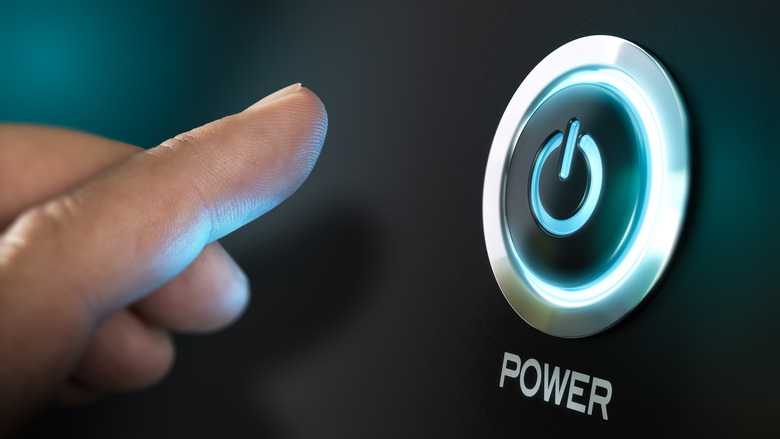How Do Push Button Switches Work In An Electrical Circuit?
Electrical circuits need to be complete to work. The electricity must be able to flow uninterrupted through the various wires and components. But circuits that are complete all the time aren't as useful as ones that work only when we want them to. This is what a switch does. Some switches are hidden inside machinery; others are where we can see and use them. The push button switch has thousands of familiar uses, from elevators to car stereos. It comes in two basic kinds: momentary and non-momentary.
Construction
Construction
A push button switch is a small, sealed mechanism that completes an electric circuit when you press on it. When it's on, a small metal spring inside makes contact with two wires, allowing electricity to flow. When it's off, the spring retracts, contact is interrupted, and current won't flow. The body of the switch is made of non-conducting plastic.
Momentary Contact
Momentary Contact
Momentary switches work only as long as you press on them, like the buttons on a phone, calculator or door buzzer. They can be subdivided into normally-on and normally-off types.
Normally-Off
Normally-Off
With the normally-off switch, there's no connection till you push the button. Most push button switches are used this way. Examples include doorbell buttons, cell phone keys and garage door openers.
Normally-On
Normally-On
Here the switch conducts normally, but interrupts the circuit when you press on it. This is more specialized, and may be used in conjunction with a wiring trick. For example, connecting a normally-on switch in parallel with a light bulb will light the bulb when the button's pushed; otherwise, current will flow through the switch, leaving the bulb off.
Non-Momentary Contact
Non-Momentary Contact
Non-momentary switches take one push to turn on, another to turn off. TVs and stereos use non-momentary switches for their power buttons.
Ratings
Ratings
For reliability and safety, switches are rated for current and voltage. This is necessary since higher voltage or current requirements call for larger, more expensive parts, and switches, like most parts, are only as large as necessary. Cell phones and portable radios have small requirements; industrial machines have large requirements.
Cite This Article
MLA
Papiewski, John. "How Do Push Button Switches Work In An Electrical Circuit?" sciencing.com, https://www.sciencing.com/push-switches-work-electrical-circuit-5030234/. 13 March 2018.
APA
Papiewski, John. (2018, March 13). How Do Push Button Switches Work In An Electrical Circuit?. sciencing.com. Retrieved from https://www.sciencing.com/push-switches-work-electrical-circuit-5030234/
Chicago
Papiewski, John. How Do Push Button Switches Work In An Electrical Circuit? last modified March 24, 2022. https://www.sciencing.com/push-switches-work-electrical-circuit-5030234/
